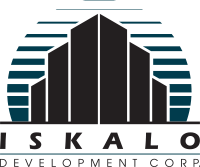If you’ve recently moved, or plan to move, into a new commercial lease, you will probably want to make some renovations to accommodate your business. A tenant improvement allowance is one incentive landlords can offer tenants to help pay for those renovation expenses.
What is a Tenant Improvement Allowance?
The tenant improvement (TI) allowance, or build-out allowance, is the amount of money that a landlord is willing to give or reimburse a tenant for renovations and improvements, or sometimes other expenses associated with moving into a new space. The TI allowance is negotiated into the property’s lease, along with a detailed outline of what items it can be spent on. A TI allowance does not have to be repaid at any point and can help mitigate build-out costs, making it a great incentive for tenants!
Depending on the size of the space and the landlord, how the build-out process is managed may vary. If the TI allowance is controlled by the landlord, they will take care of the full construction process and costs, and in many cases, the landlord will hire contractors and oversee the construction. If the build-out allowance is tenant-controlled, the tenant is responsible for overseeing the construction project. The landlord may offer funds upfront or reimburse the tenant after construction.
How is Tenant Improvement Allowance Calculated?
The TI allowance is usually stated in either a dollar per square foot or total dollar sum. The square footage is based on the size of the unit. The dollar amount accounts for a number of factors, including the real estate market, the location, the value of the tenant, and the extent to which the build-out improves the property.
What Does TIA Cover?
Landlords typically prefer TI allowance to be spent on mostly hard costs. Hard costs are improvements that will be left behind after the tenant leaves that could benefit the landlord directly. The landlord is mostly concerned with the modifications that will increase the value of the building, such as framing and walls, HVAC, doors, windows, paint and flooring.
Some soft costs that are a necessary part of the build-out process, such as a construction management fee or legal fees, may be included in the TIA. Tenants can negotiate with landlords to expand the TIA to cover additional soft costs such as permit fees and architectural fees. Sometimes, the landlord may include a small portion of costs for technology, furniture or moving expenses to secure a deal with a tenant.

